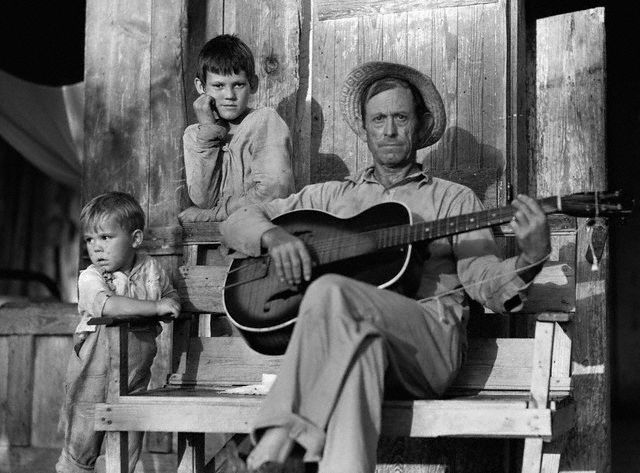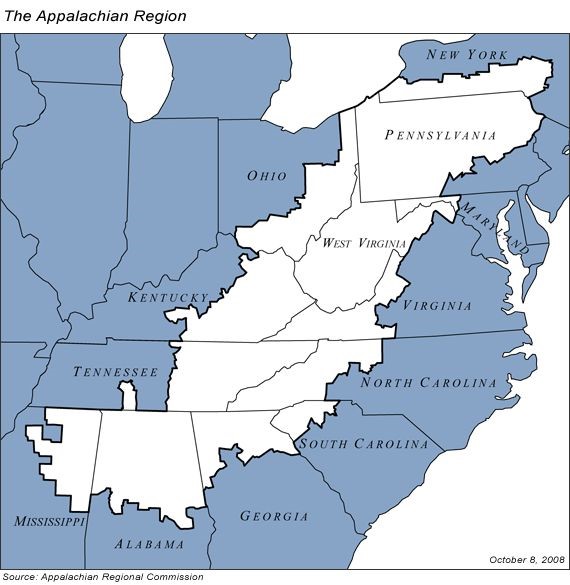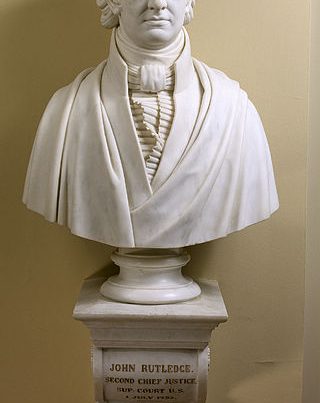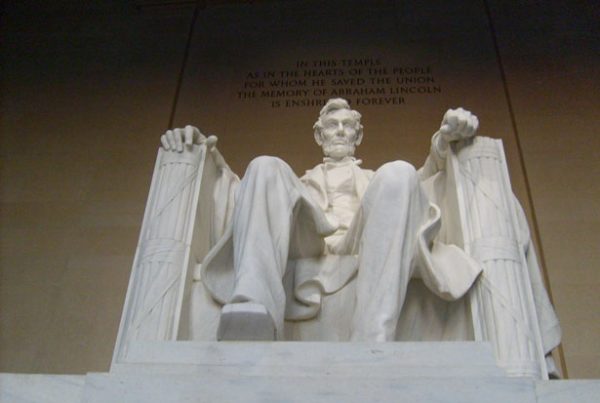In our politically correct culture where even the mildest criticism of a societal group can earn someone the label of racist, it remains open season on rural America. When Barack Obama famously spoke of rural Pennyslvanians in 2008 as “bitter” people who “cling to guns or religion or antipathy toward people who aren’t like them” and are prone to “anti-immigrant sentiment”, he was simply describing the stereotype that Americans have come to accept about that segment of our population that makes its home in the region known as Appalachia.
The Appalachian Regional Commission identifies the Appalachian Region as “a 205,000-square-mile region that follows the spine of the Appalachian Mountains from southern New York to northern Mississippi. It includes all of West Virginia and parts of 12 other states: Alabama, Georgia, Kentucky, Maryland, Mississippi, New York, North Carolina, Ohio, Pennsylvania, South Carolina, Tennessee, and Virginia. Forty-two percent of the Region’s population is rural, compared with 20 percent of the national population.”
To many, this region of our country is the home of the Appalachian hillbilly, a somewhat gruesome group of people known for personifying all that is unpleasant in American society. Just ask anyone who is a baby boomer what they think of when they hear the word “hillbilly” and a scene from the 1972 movie Deliverance will probably come to their mind, along with the tune of “Dueling Banjos.” Ask a Generation Xer or a Millennial the same question, and they are likely to think of Cletus Spuckler of The Simpsons TV series (or one of his forty-four children). In both of these cases, the image is a particularly unappealing one.
It is my contention that this image is a greatly exaggerated one, a stereotype that is the product (or, better, invention) of individuals and groups over the past 175 years or so who had something to gain by creating this image. This article seeks to focus on the collusion between sociologists, the federal government, and the media in promoting the hillbilly stereotype as a means to justify the ill-treatment of these people.
One of the earliest visions of what has come to be known as a “hillbilly” came from the tormented mind of Edgar Allan Poe. In 1843 Poe wrote A Tale of the Ragged Mountains in which he mentions hearing accounts of “uncouth and fierce races of men who tenanted (the) groves and caverns” of the Virginian mountains. With the advent of a new century and the desire of the federal government to establish a series of national parks in the eastern United States to encourage tourism, the presence of these “uncouth” people presented an obstacle to be removed. Land along the borders of Tennessee and North Carolina, the home of hard-working loggers and mountain homesteaders, was seized to become the Great Smoky Mountain National Park. But the idea of peaceful people being forced off their lands did not sit well with many Americans.
When a similar effort was made by the United States Park Service to acquire the Skyland area of the Virginia Blue Ridge Mountains in Northern Virginia, justification for the removal of several rural communities of mountain people – many who had lived on the land for generations – had to be created. “Science” came to the rescue. Armed with intelligence quotient tests, sociologist went into the mountains to prove the inability of mountaineers to provide a decent living for themselves in the hollows and to show that their removal was in the “best interests” of all parties. Out of this experiment came Mandel Sherman and Thomas Henry’s Hollow Folk in 1933, one of the most influential works of sociology of its era. Hollow Folk was an account of five communities in what would become the Shenandoah National Park. In the book, the Shenandoah residents were described in terms that would become the warp and woof of the hillbilly stereotype – they were said to be “almost completely cut off” from American life; “completely uneducated”; that the women were “beasts”; and that their children had “no toys nor do they know the meaning of the term toys.” To remove such people from this wretched environment would actually be a blessing to them, would it not?
But archaeological expeditions in the Shenandoah Mountains in the late 1990s uncovered an array of evidence that completely undermines the assertions of Sherman and Mandel. Remains of automobiles, imported china, soft drink containers, pocket watches, pharmaceutical bottles, military items, store-bought shoes, jewelry and mail order toys (including toy trucks, porcelain doll fragments, a baseball, a harmonica, and even a “Buck Rogers” ray gun made in Michigan) were among the items found. In short, the evidence indicates that the mountain people were much like people in any other part of the country. Clearly, the hollows were not mired in hopeless isolation as reported by Mandel and Sherman. Nevertheless, the mountaineers were evicted – for their own good, according to the authors of Hollow Folk.
But perhaps the most egregious examples of the use of half-truths and propaganda in order to justify the seizing of land from Appalachian mountaineers are related to the creation of the Tennessee Valley Authority. The TVA began acquiring land in 1933 for the purpose of creating a series of reservoirs to be used for generating electricity. But creating reservoirs was not its sole purpose. In 1934 President Franklin Roosevelt said:
There is a much bigger situation behind the Tennessee Valley Authority . . . we are conducting a social experiment . . . we are going to come to a shack on the side of the mountain where there is a white man . . . who, with his family of children, is completely uneducated . . . and is progenitor of a large line of children for many generations to come . . . we are going to try to bring him some of the things he needs, like schools, electric lights, and so on.
TVA officials parroted this paternalistic attitude, viewing the inhabitants of the Tennessee Valley as victims and offering them “salvation” via enlightened industrial development. Roosevelt went on to imply that the government had the right to take the lands of the Tennessee Valley because their owners had failed to use the land for its highest good. The TVA attempted to justify this accusation by portraying the mountaineers as people who opposed the rational use of land. It created a film, Valley of the Tennessee, in which a hillbilly responds scornfully to a TVA agent who is trying to explain the wisdom of the TVA agenda. One TVA official used inflammatory terms such as “frightful hovels” to describe mountaineer homes and “beasts of burden” to describe mountaineer women.
The press cooperated with the TVA by publishing photographs of one-room schoolhouses in the mountains, despite the fact that very few such schools were in use by the time the TVA came. Photographs of old ladies with big bonnets washing their clothes by hand in front of their log cabins were also published. Individuals who were removed from the Tennessee Valley were aware of these photographs and the illusion that they created for the rest of the nation, and resented it.
Shortly after this series of land grabs, Arnold Toynbee added the luster of “history” to the vision of the uncivilized, backwards Appalachian mountaineer in his monumental work A Study of History:
The modern Appalachian has . . . failed to hold his ground and has gone downhill in a most disconcerting fashion. In fact the Appalachian ‘mountain people’ today are no better than barbarians. They have relapsed into illiteracy and witchcraft. They suffer from poverty, squalor, and ill-health. They are the American counterparts of the latter-day white barbarians of the Old World . . . but, whereas these latter are belated survivals of an ancient barbarism, the Appalachians present the melancholy spectacle of a people who have acquired civilization and then lost it.
When pressed by sociologist James Brown about the sources of his information, however, Toynbee later admitted that he himself had only been to the mountains “once or twice”, and that his primary source was a friend who, while also not from the mountains, lived “within reach of them.” Toynbee conceded that this was a “rather slight acquaintance on which to give any account of” Appalachian people and their life.
Toynbee’s admitted guesswork notwithstanding, a “historical” foundation had been laid upon the sociological one. Buttressed by television and film in our generation, a resilient image has been constructed. In today’s acerbic political climate, one has only to accuse one’s ideological enemies of being “rednecks” or “rubes” to persuade them to back off a given position or to garner a cheap laugh on a late night comedy show. The deconstruction of this image of the hillbilly is proving to be a most difficult one, but given the electoral clout of this region in recent elections, maybe not impossible. When presidential candidate Hilary Clinton described half of Donald Trump’s supporters as “racist, sexist, homophobic, xenophobic, Islamaphobic” – a “basket of deplorables” – you can bet she didn’t have the urban voter in mind. These comments likely played a role in her defeat. It may just be that politicians who insult the Appalachian “hillbilly” in the future may do so at their own peril.







